Exploring Student Iyomi Ho Ken’s Imaginative Universe
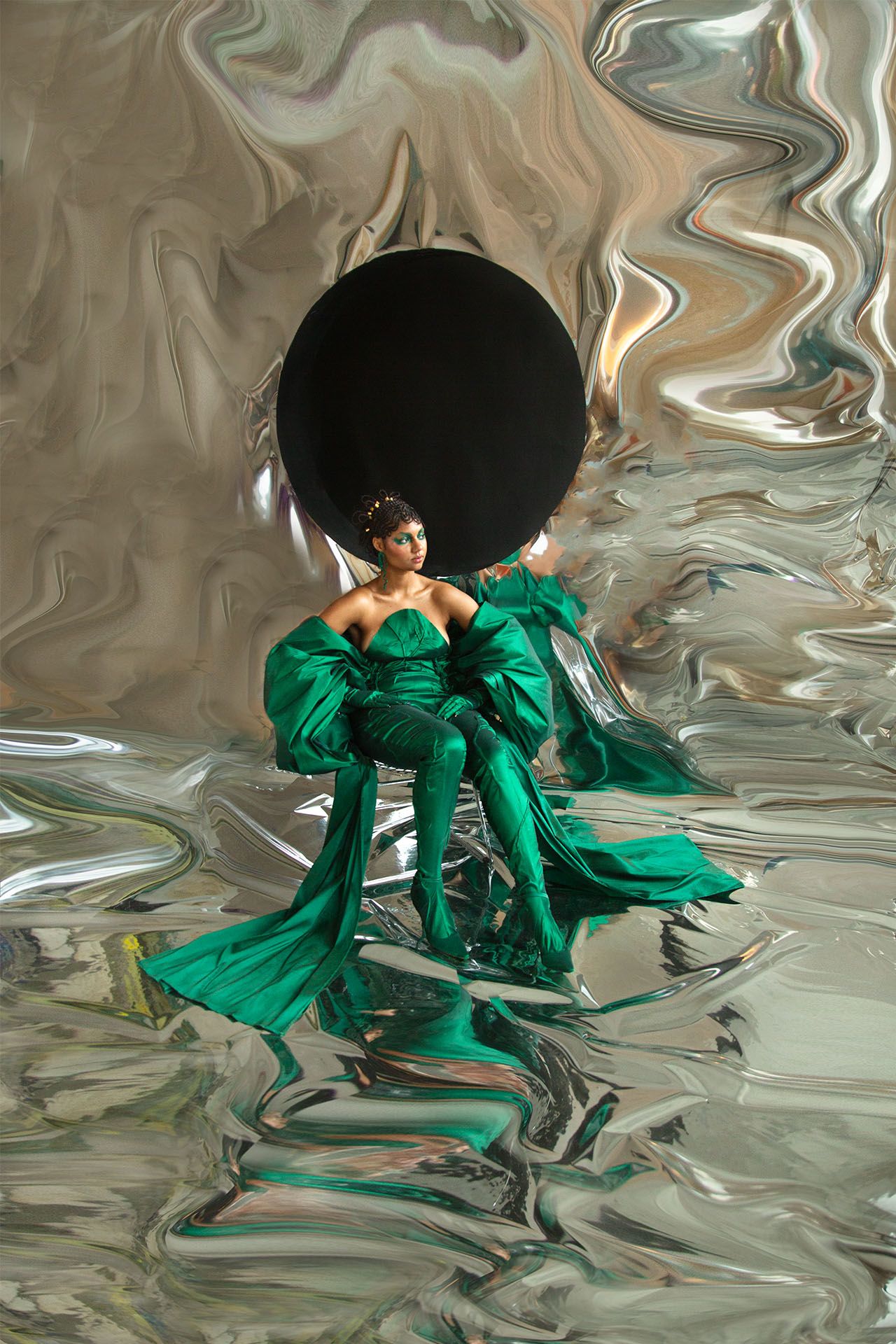
by Sophie Lucido Johnson (MFA 2017)
Even though Iyomi Ho Ken has been sewing since she was seven, she didn’t initially think fashion was what she was going to do with her life.
“I thought I’d be a vet,” she said. “It didn’t really click for me that fashion was what I was going to do until my grandma said that it was.” Ho Ken grew up in Florida in a Chinese-Jamaican household. Family is fundamental to Ho Ken—as is heritage, cultural identity, and the complex elements of selfhood. All of that comes out in her work, which is as personal as it is beautiful.
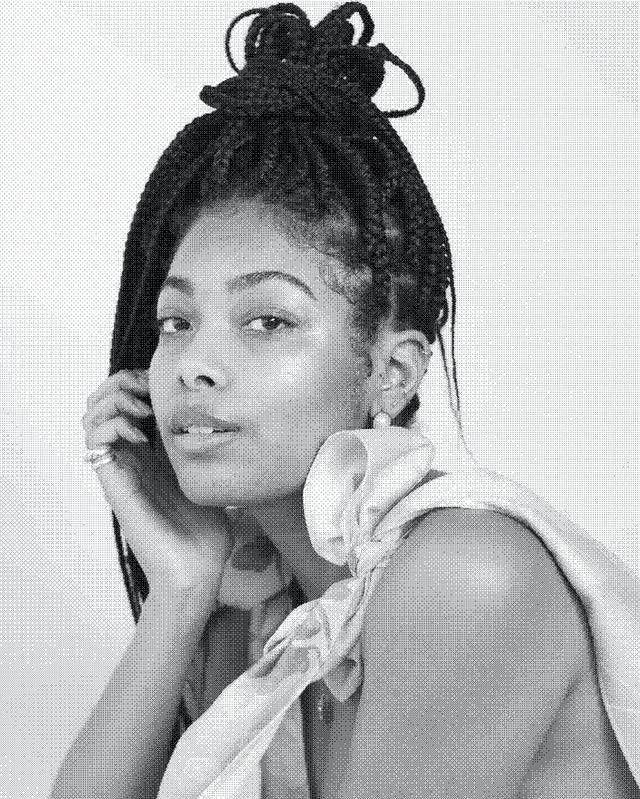
Iyomi Ho Ken. Image courtesy of the artist
Iyomi Ho Ken. Image courtesy of the artist
Maybe it’s this sense of connectivity that has made Ho Ken so successful and versatile at such a young age. The 21-year-old School of the Art Institute of Chicago (SAIC) senior was recently awarded two prestigious Council of Fashion Designers of America (CFDA) Awards: the Coach Dream It Real X CFDA Design Scholarship Award and the CFDA COVID Relief Fund Award. The $75,000 total award money speaks to the value and uniqueness of Ho Ken’s work.
Ho Ken submitted work around a fashion portfolio she created in 2020 titled The OtherSide. The pieces are dramatic and sculptural; they draw simultaneous attention to the richness of color and the strength of the human body—specifically, of Black women. After taking a class on Afrofuturity at SAIC taught by Associate Professor, Adj. D. Denenge Duyst-Akpem, Ho Ken decided to focus the collection on being Black and what Afrofuturity (the term coined by Duyst-Akpem which Ho Ken prefers to Afrofuturism) meant to her.
“I was really fascinated with the theories and ideas inside of Afrofuturity,” she said. “I was trying to see the complexities of how Black people exist in art spaces. I wanted to look at the future and make work that seemed fantastical but still exists and is real.”
By making work that was joyful and imaginative and fiercely present, Ho Ken was able to actualize ideas that sometimes only exist in spheres of fantasy.
“I wanted to have these women exist here and now. I didn’t like the idea of escapism. There’s a portal in the background [of the photographs] that can take you to other worlds, but there’s also the world right now,” she said.
“I was trying to see the complexities of how Black people exist in art spaces. I wanted to look at the future and make work that seemed fantastical but still exists and is real.”
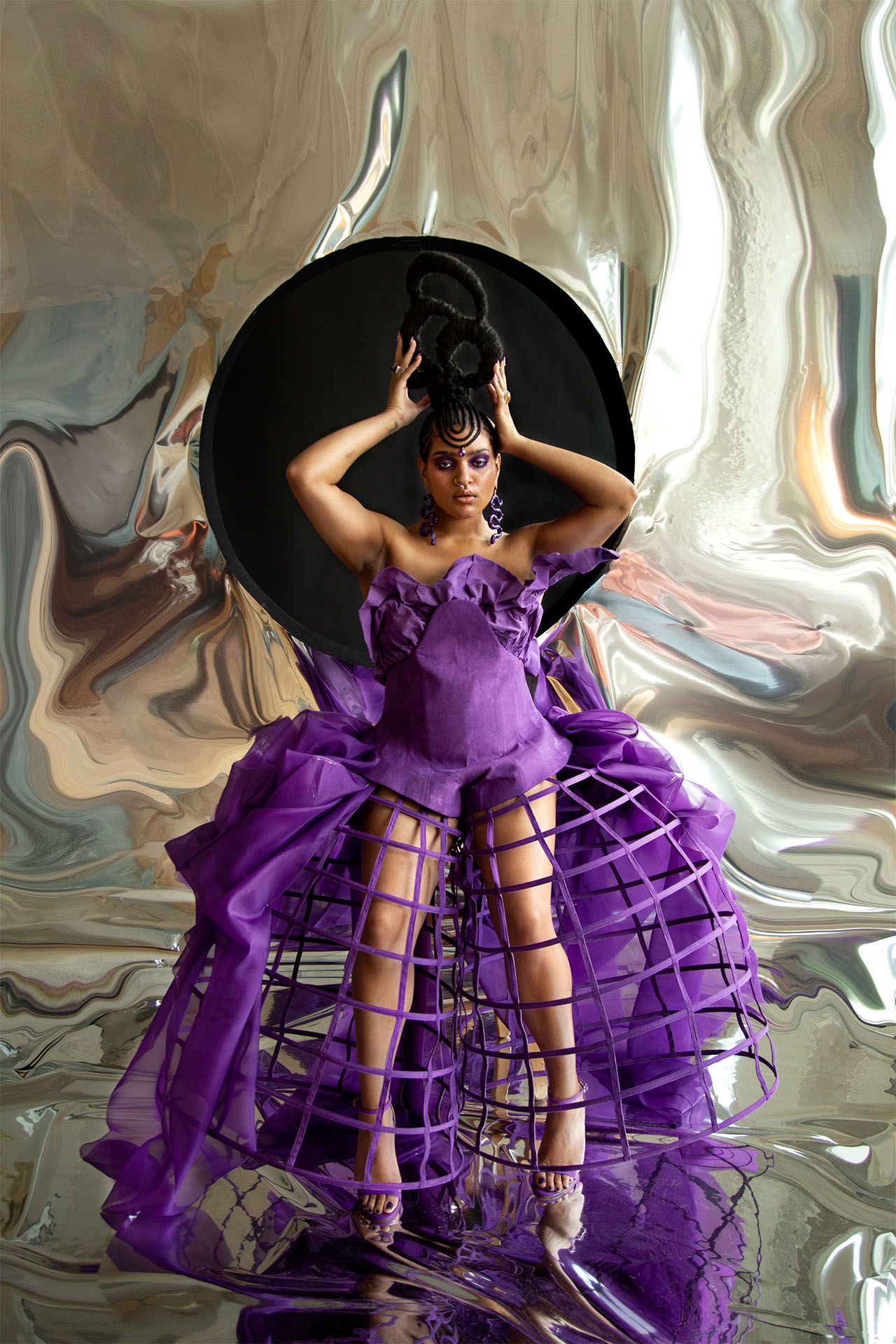
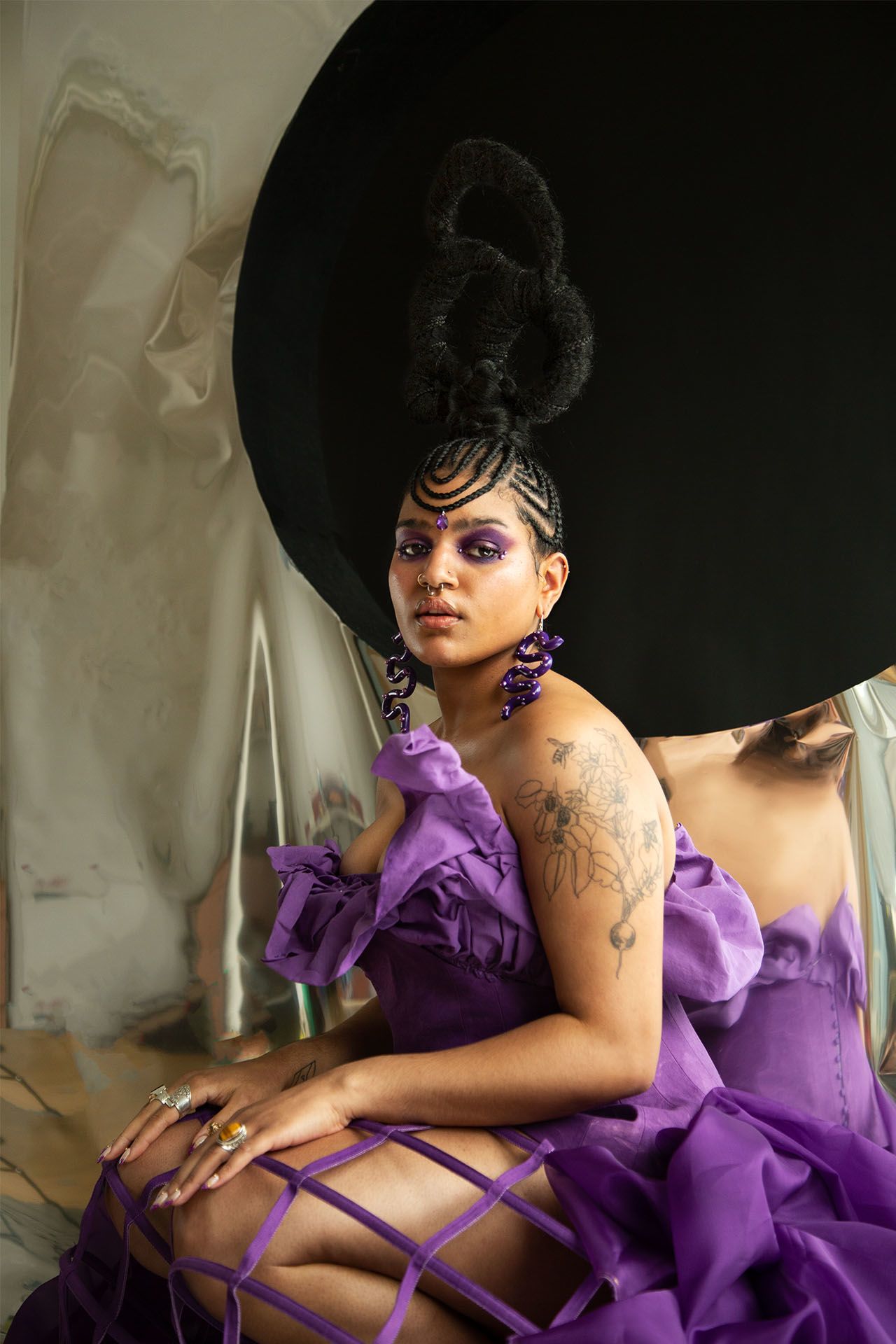
Images from Ho Ken's collection The OtherSide. Photos by Iyomi Ho Ken. Images courtesy of the artist
Images from Ho Ken's collection The OtherSide. Photos by Iyomi Ho Ken. Images courtesy of the artist
Indeed, it’s not just her artistic work that has created impact in her community. One of the awards Ho Ken received was in response to her answer to a question about a time she had the courage to be real. Ho Ken thought about her work as one of the co-leaders of the Black Student Union at SAIC and specifically about changes she’d helped to initiate around artistic critiques at the School.
“A lot of my work has to do with race, and a lot of my classmates didn’t know how to critique the work through that lens,” she said. “I mentioned to my core fashion design professor [Associate Professor, Adj. Caroline Bellios] that I was frustrated, and she heard my frustration.” Together, they got to work creating and implementing an art critique specifically for Black students.
This critique was open to students who wanted a panel that would talk openly about race as it related to their work. The aim was to have a group of people actively listening to what student artists were saying, while being able to connect to what it meant to be a person of color in the context of artistic creation.
Within two weeks, the first critique was scheduled. Stephanie and Bill Sick Professor of Fashion, Body and Garment Nick Cave, Senior Lecturer Tommy Walton, Lecturer Jackey Cave, Assistant Professor Rey Pador, and Lecturer Nia Easley sat on the panel. “It was the best critique I ever had at school,” Ho Ken said. “It wasn’t just people of color or Black people, but also people who were established and who knew the language. They know what people are looking for who want a critique.”
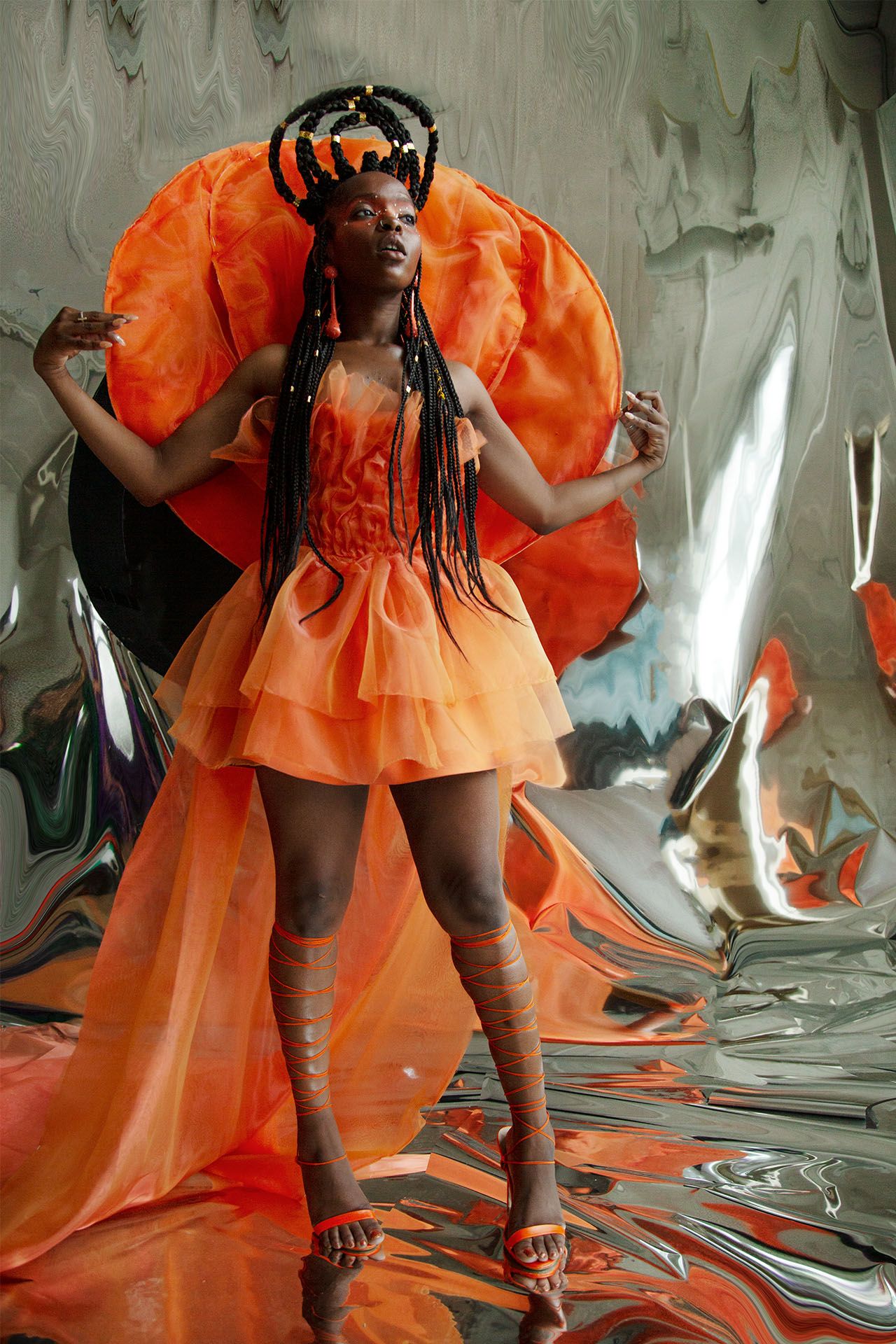
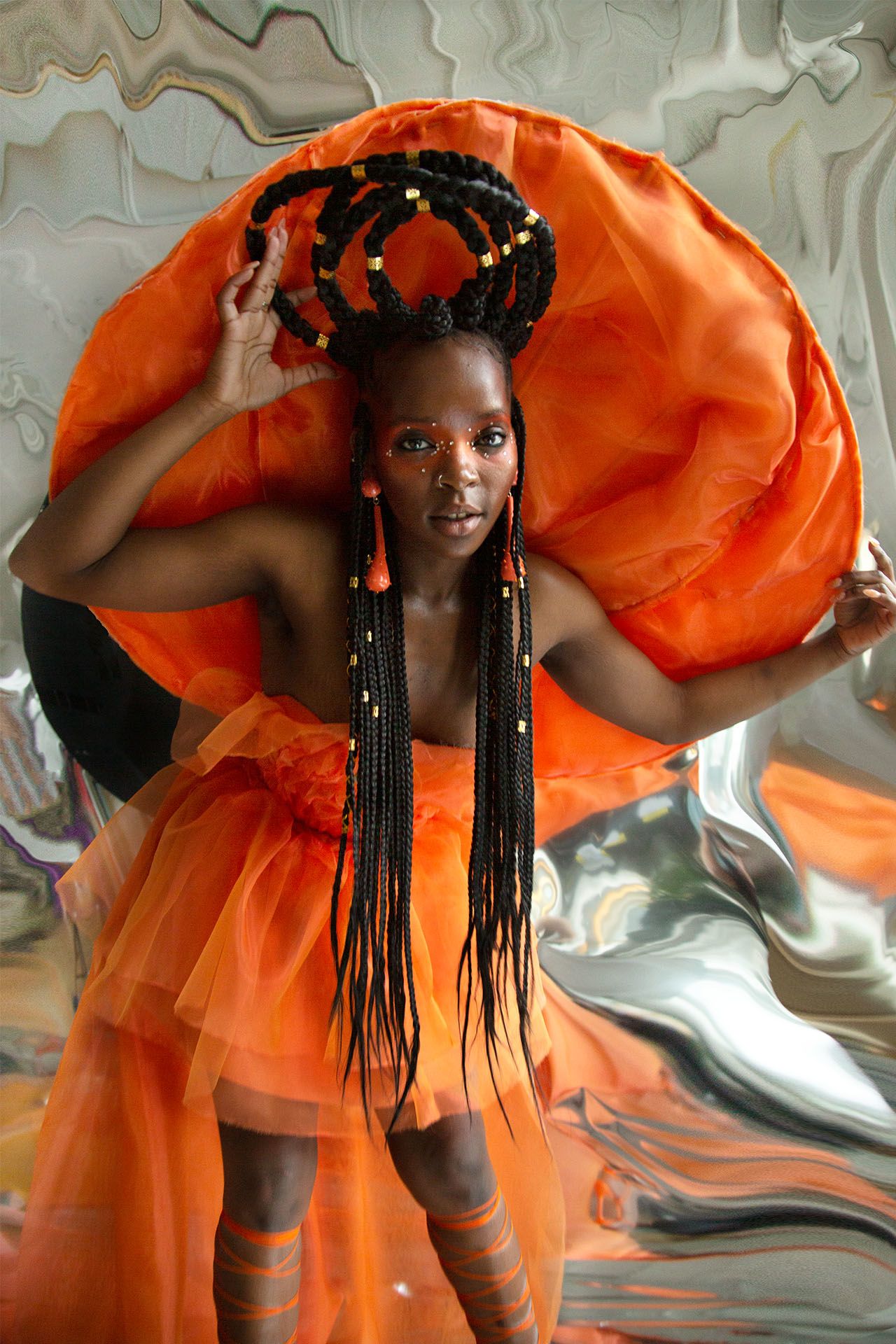
Images from Ho Ken's collection The OtherSide. Photos by Iyomi Ho Ken. Images courtesy of the artist
Images from Ho Ken's collection The OtherSide. Photos by Iyomi Ho Ken. Images courtesy of the artist
For Ho Ken, the process of developing a voice in her own work has been intentional, powerful, and always changing. She chose SAIC because she believed it would help her to see fashion as more than just clothing.
“I really liked how SAIC made its students go out of the box. I wanted to learn how to get out of my own box,” she said. “Growing up in a family that doesn’t have the most money at hand, I was very connected to art, but clothes were something you bought out of necessity. You didn’t go out and buy a sculptural top, because that wasn’t a necessity.”
Indeed, Ho Ken’s work takes the necessity of clothing and pushes its boundaries to embrace so much more. Her pieces are like satellites, connecting thoughts and ideas that she has built and accumulated in her years of study.
Ho Ken’s senior thesis is an appropriate culmination of all she’s done so far: it’s a self-portrait about her heritage, her emotions, her journey, and her clothes.
“I just wanted to make something that made me happy,” she said. “I wanted to focus on myself.” ■
{{[http://www.saic.edu/news/students]STUDENTS}} {{[http://www.saic.edu/news/artconnectsus]ART CONNECTS US}}
